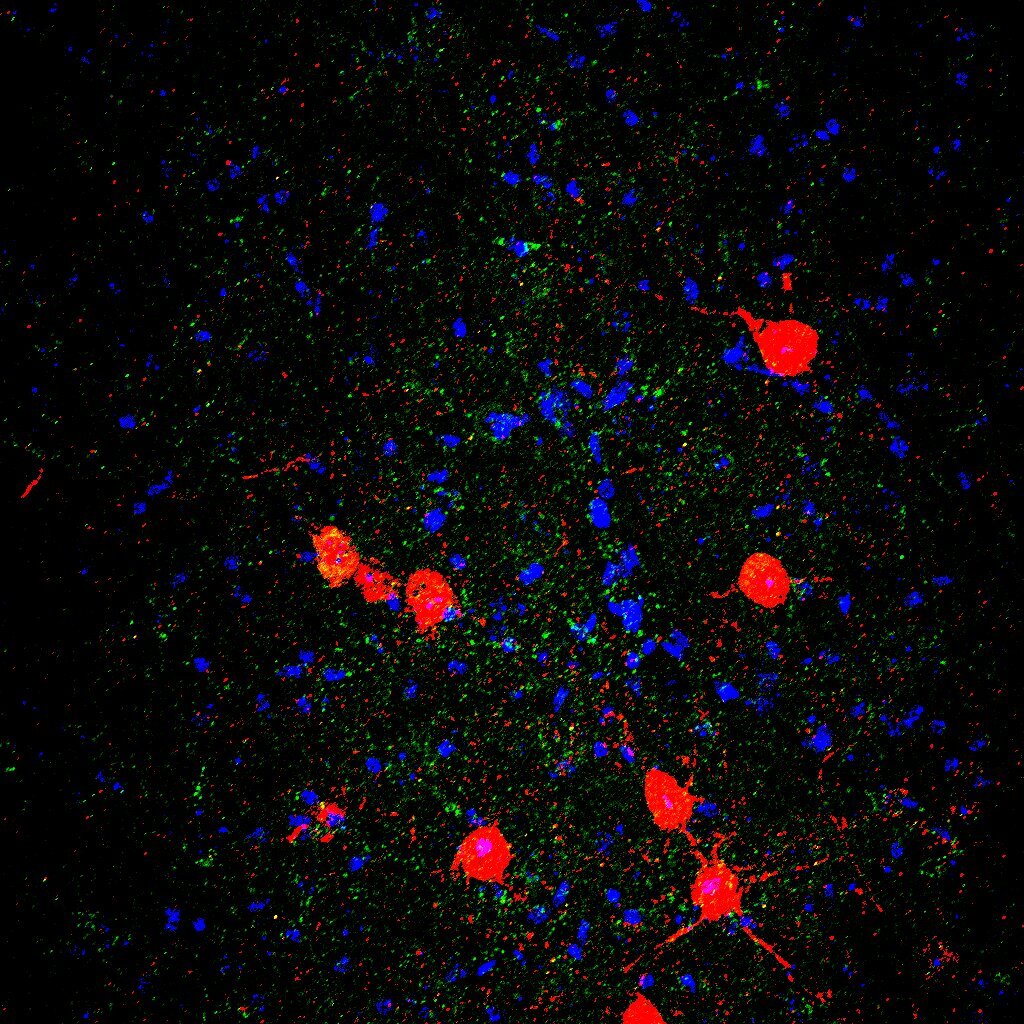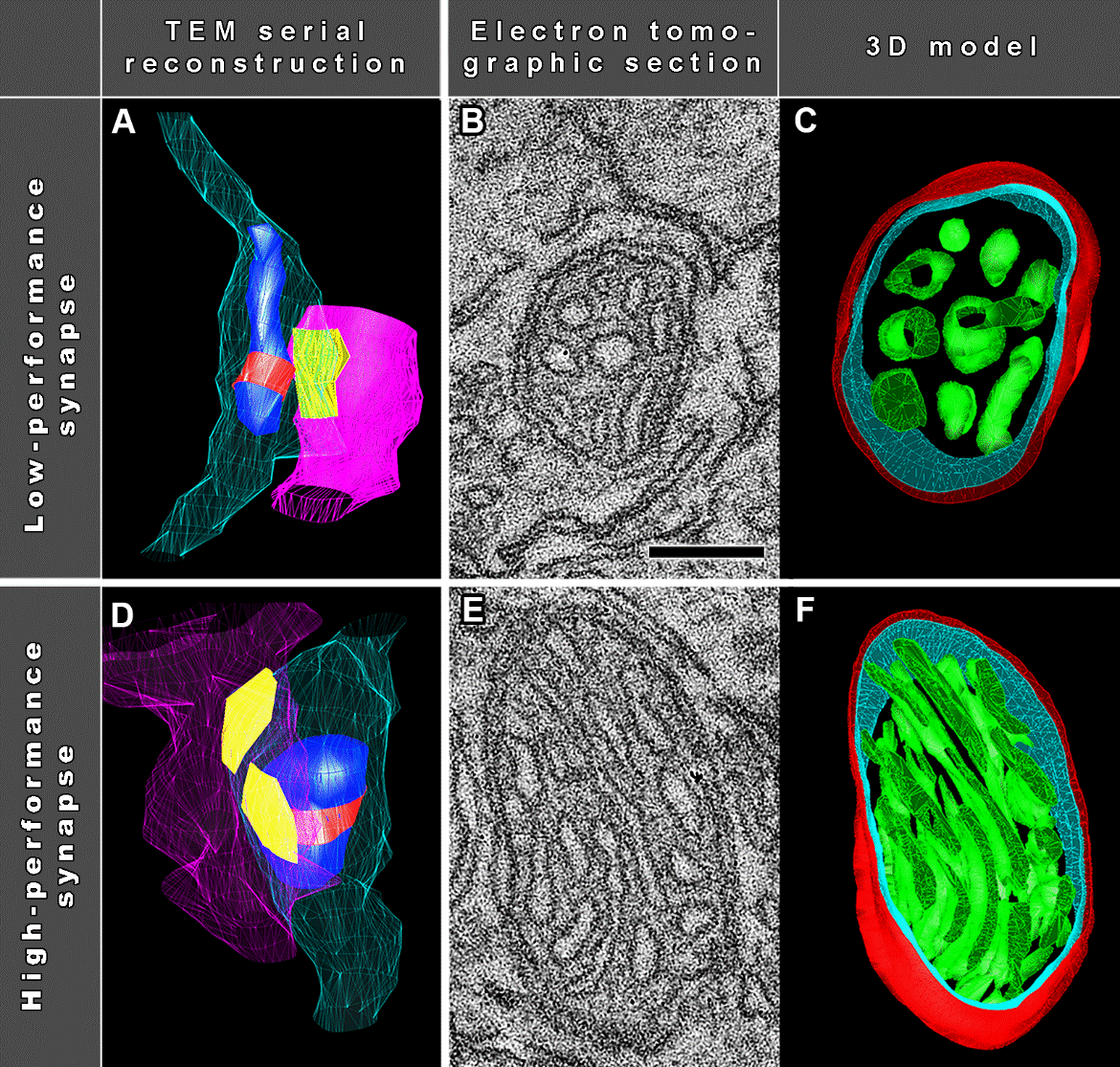Neuronal Excitability
These images show the GABAA receptor δ subunit expressed on parvalbumin-positive interneurons in the basolateral amygdala.
Authors highlight TrkB-dependent molecular pathways as critical for the maturation of inhibitory interneurons and support the hypothesis that loss of BDNF signaling in cortistatin interneurons leads to altered excitatory/inhibitory balance.
Authors report a viable chaperone-based strategy for reversing the synaptic vesicle trafficking defects associated with excess α-synuclein, which may be of value for improving synaptic function in Parkinson’s disease and other synucleinopathies.
Synaptic boutons in the muscle of a larval fruit fly
Ramendra Saha tells the story behind his first publication as senior author on histone H2A.Z hypervariant function and the challenges he faced as a new independent investigator.
PhD Candidate Ruilong Hu and Dr. Ricardo Araneda tell the story about their eNeuro publication that showed that the two predominant subtypes of inhibitory neurons in the main olfactory bulb, the granule cells and periglomerular cells, exhibit subthreshold resonance mediated by hyperpolarization-activated currents (Ih), as opposed to the primary output neurons, the mitral cells.
Authors show that axons of inhibitory neurons have distinctive structural and molecular features that contrast with those of the majority of myelinated excitatory axons in human neocortex.
Authors find an evolutionarily conserved, cell-type independent coupling of mitochondrial ultrastructure to synaptic performance.
FOLLOW US
TAGS
CATEGORIES




.jpg)



 RSS Feed
RSS Feed




